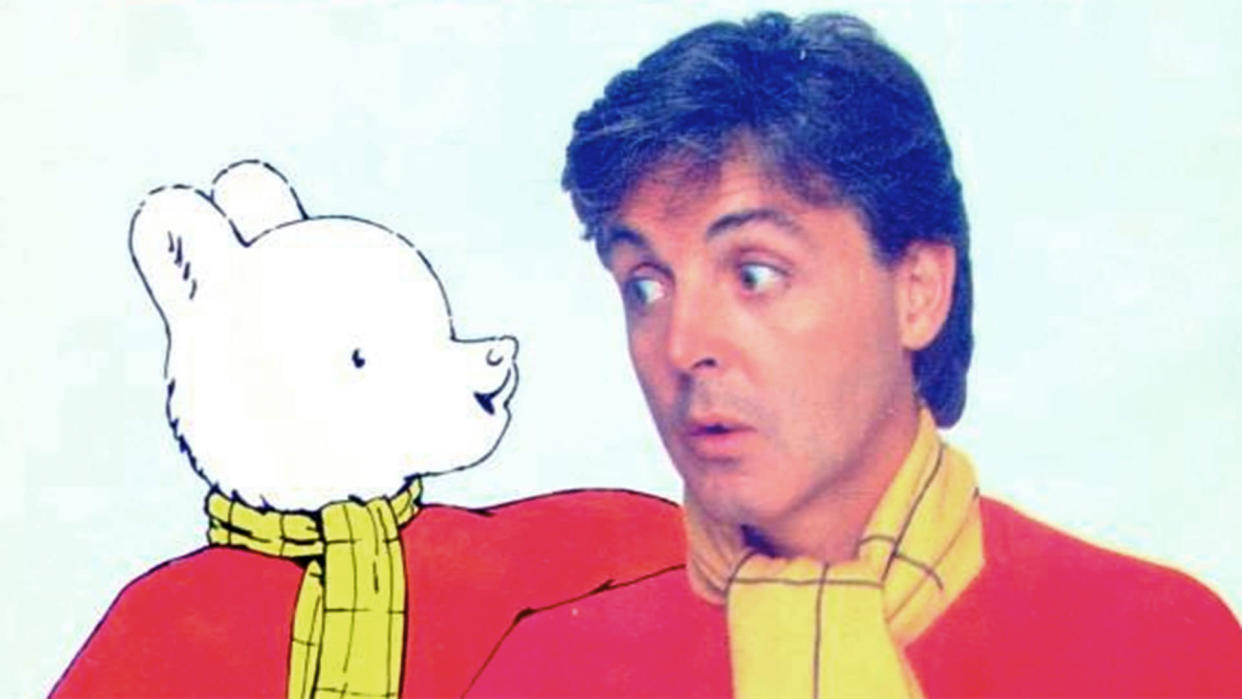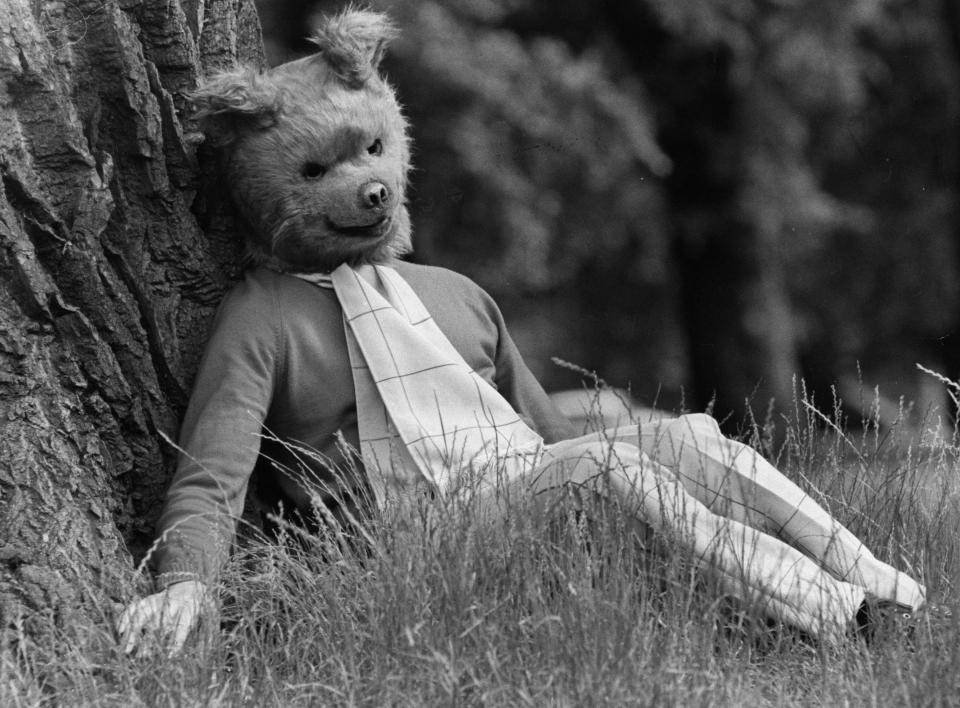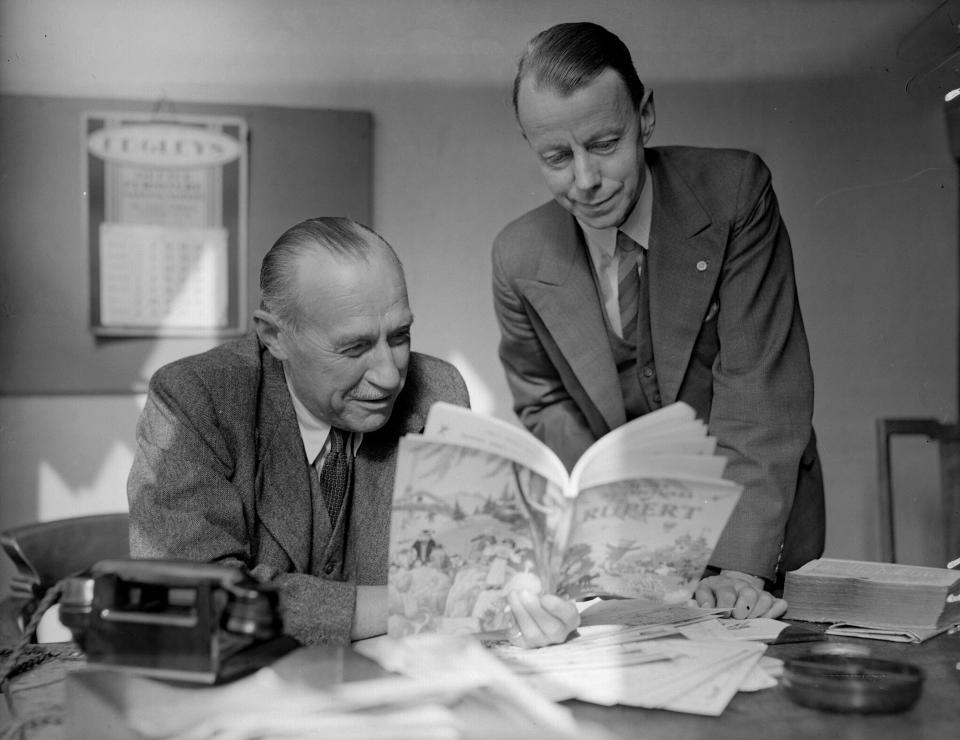How Paul McCartney nearly made a Rupert The Bear movie

As Sir Paul McCartney turns 80, we look back at his failed attempt to make a Rupert The Bear movie.
Bears have been big business at the movies over the last few years, with Winnie the Pooh enjoying box office success via Christopher Robin, and Paddington becoming a bona fide franchise smash thanks to two hugely popular films, with another on the way.
But another bear — as cute as Winnie and Pads, and just as well-known in the UK — failed to get an invite to the celluloid party. Rupert — he of the yellow scarf, red jumper and tweed trousers — debuted in the pages of the Daily Express in 1920, and his adventures have been entertaining children of all ages ever since.
But in spite of small screen success via multiple TV shows, Rupert is yet to make his big screen debut.
Though some 35 years ago, a Beatle came close.
Can buy me love

Paul McCartney enjoyed Rupert’s stories as a kid, and particularly loved the illustrations of Alfred Bestall, who spent more than 40 years crafting tales and pictures for the bear. But it wasn’t until he was telling those stories to his daughter Heather that McCartney saw the character’s full potential.
Read more: Disney stars who went off the rails
With The Beatles coming to an end, McCartney was looking for new endeavours, so approached Daily Express editor Sir Max Aitken, and convinced him to sell the film rights. With Macca bemoaning the Americanisation of Winnie the Pooh by Walt Disney, he promised to keep U.S. accents out of this very British story.

McCartney planned an animated, feature-length movie musical, and wrote a series of songs for the project throughout the 1970s, with names like ‘Nutwood Scene’, ‘Walking the Meadow’, and ‘Rupert Song’. In the early 1980s, he approached Argentinian animator Oscar Grillo — with whom his wife Linda had worked on animated short Seaside Woman — and pitched shooting a Rupert short before embarking on a feature. But very quickly money became an issue.
Speaking to movie magazine Stills in June 1984, McCartney explained “Oscar wanted to spend a lot of money on it, which I don’t blame him for. You know, if it was someone else’s money, I’d want to spend $50m as soon as look at you. But for a pilot, just to see if the whole idea worked, I thought it was a bit risky.”
Rupert and the Frog Song

The singer-songwriter was still keen to make the short however, telling Stills “We’ve got all these ideas cooking but I don’t think anyone was eager to go into the $40m job without knowing a hell of a lot more.” So he turned to director Geoff Dunbar, whose first animation Lautrec won the Palme d’Or in Cannes, and whose second effort took home the Golden Bear in Berlin.
The result of their collaboration was Rupert and the Frog Song, a 13-minute cartoon inspired by an Alfred Bestall illustration in the 1958 Rupert annual. The film featured the vocal talents of June Whitfield and Windsor Davies, while McCartney himself voiced Rupert and his pals.
The story, which was written by Paul, Linda and Geoff, kicked off with Rupert going for a walk in the hills near his house. He says goodbye to his parents, and invites friends Edward Elephant and Bill Badger, though they are too busy to join him. So Rupert sets off alone, and soon encounters a kaleidoscope of butterflies, who lead him to a cave where a sign reads “Frogs Only From This Point.”
Rupert ignores the warning, enters, and bears witness to a musical performance that occurs just once every 200 years. There are amphibians everywhere, and they launch into the McCartney-penned ‘We All Stand Together’ as fireflies light up the cavern, illuminating singing fish, a ballet dance, and frogs flying in hot-air balloons overhead. Then an inexplicably evil owl interrupts proceedings, the frogs disperse, and Rupert heads home for dinner.
Read more: The wildest Avengers: Endgame theories
Both the song and film were a huge success, with the former reaching No.3 in the UK charts, and the latter becoming one of the bestselling videos of 1985. It also won the BAFTA for Best Animated Short, and screened theatrically alongside McCartney feature Give My Regards to Broad Street, where it was the undoubted highlight of that double-bill.
The Walt Disney influence

The animation ended with the words “That’s All For Now,” paving the way for the full-length feature. And McCartney had big plans, telling Stills: “I’m aiming for something equivalent to Walt Disney, in as much as it’s very highly skilled animation.”
He added “We’re playing with the idea of ‘How Disney can you go?’ Because obviously Rupert is anchored in the Bestall books. We took the ‘40s as our period, where Rupert is in full colour and where I think there is a Disney influence. The big discovery was to go back to the annuals. We began by taking a lot of license, saying ‘Well this is a film now, so we can do what we want.’ We moved in some directions that we had to come back from, and in the end we got closer and closer to Bestall.”
Read more: The biggest Marvel Studios scandals
While the title bear was a largely passive character in The Frog Song, he was going to be the focal point of the film. “He’d have a much more central role to play” McCartney told Stills. “One of the problems with Rupert is that I don’t think the stories are very good. Generally, he tends to go away from home, have an adventure and then come home for tea. That’s nice, but there’s no one, big, Cinderella-like story.
“I’ve got an idea for a full-length story which is kind of a quest. We’re spent a lot of time on it now and we’re starting to feel it’s coming together, that we’re cracking it. But then it’s like having written as song: I know when I’ve got a hit.”
The End of the Road

Sadly however, McCartney never found that hit. As Philip Norman explains in Paul McCartney: The Biography, “Another producer acquired the Rupert rights and insisted the feature-length version could only be made by his company and MPL [McCartney Productions Ltd.] in partnership. With that, the project withered away.”
Withered yes. But it didn’t completely die. McCartney is rumoured to have collaborated with George Martin on a new tune for the movie a few years later. While songs from those original Rupert sessions have been popping up on bootlegs ever since. Indeed many can still be found online if you know where to look.
Read more: Secret Netflix codes that unlock content
So with bears big business right now, it feels like the right time to resurrect this inter-species collaboration. So that Rupert can take his rightful place alongside Paddington and Pooh in cinemas.
And so that both Beatle and Bear can take one last shot at celluloid glory.

 Yahoo Movies
Yahoo Movies 
